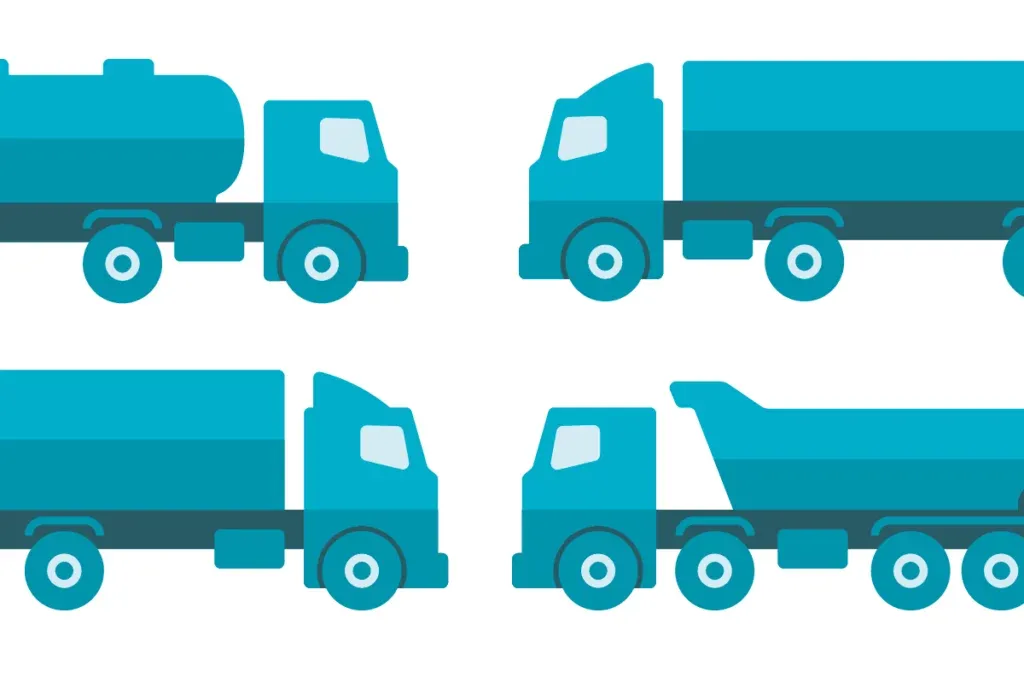With the freight and logistics industry booming, trucks and licensed vans are in high demand. HGVs are heavy goods vehicles, sometimes referred to as large goods vehicles (LGV). The classification covers commercial vehicles with a total weight of over 3.5 tonnes or 3,500 kilograms. Common HGVs include tippers, flatbeds, dropsides, and fridge trucks. HGVs have special licence requirements and vehicle tracking requirements.
What Does HGV Stand For?
HGV stands for “heavy goods vehicle”. It is an EU term for any vehicle with a gross vehicle weight of over 3.5 tonnes. The categories of HGVs depend on the size and weight of the vehicles. Some common types of heavy goods vehicles include:

- Dry and consumer goods lorries: The lorries can be rigid or articulated and used to transport cargo and consumer goods throughout the UK. Consumer goods lorries ferry goods of different sizes.
- Livestock or refrigerated trucks: Livestock trucks carry livestock and cover short distances. Refrigerated trucks are HGV vehicles fitted with freezers to carry frozen food items. The refrigerated trucks can be articulated to carry attached refrigerated containers.
- Some heavy goods vehicles are made for specific functions, such as snow ploughs, car transports, tow trucks, and cement mixers.
- Flatbed lorries: Flatbed HGV vehicles have a flat, open body for transporting large and heavy items. These lorries can transport bulky items, including construction materials and machinery.
Never risk any tachograph fines again!
Get started with analysing your tachograph files with the FleetGO all-in-one tacho solution. Never miss an infringement again!
Chances of getting invested are higher than ever!

Is a 7.5 tonne vehicle a HGV?
Yes. A heavy goods vehicle is a truck weighing over 3.5 tonnes. That means a truck weighing over 7.5 tonnes is still an HGV. The only difference is the licensing requirements for drivers. For instance, HGVs between 3.5 and 7.5 tonnes require a type C1 licence. Vehicles with a gross weight of over 7.5 tonnes need a Category C or Class 2 licence. Vehicles of over 7.5 tonnes are large lorries or vans towing trailers or horseboxes.
What is the difference between LVG and HGV?
In the UK, commercial vehicles are taxed according to weight, construction, fuel, and engine. Commercial trucks were initially separated into large and light goods vehicles. Since both were abbreviated as LGV, it became confusing, so road tax laws were amended in 1992 for large goods vehicles to be renamed heavy goods vehicles. Light goods vehicles have a gross weight of under 3.5 tonnes.
HGV Licences
Drivers or operators with heavy goods vehicles require an HGV licence. The different categories of HGV driving licences require special training for HGV drivers to qualify to operate commercial trucks. Some HGV licences include:
- HGV C1: A category C1 licence is for small commercial vans weighing more than 3.5 tonnes but less than 7.5 tonnes. The licence is valid for rigid vehicles, like tipper trucks, dropside vehicles, and box vans. Drivers who gained a licence before 1997 will automatically have the C1 licence category. However, drivers who got a licence after 1997 must complete a test to get the new licence.
- HGV C1+E: A category C1+E allows drivers to tow a trailer behind the Category C1 commercial vehicle. With the licence, drivers can drive HGVs of 7.5 tonnes plus a trailer. For instance, a driver towing a trailer with a horsebox or large commercial van requires a Category C1+E licence. For drivers to gain a C1+E licence, they must complete the qualifications of a C1 licence before upgrading.
- Category C or Class 2: The Category C licence is for vehicles over 7.5 tonnes. Most drivers get a Class 2 licence, which enables them to drive both rigid-based trucks and articulated trucks. Some vehicles requiring a Category C include fire engines, tippers, and rubbish collection vehicles.
- Category C+E or Class 1: A Category C+E licence is for vehicles of over 7.5 tonnes with a detachable trailer. Drivers with a Category C licence can upgrade to a Class 1 licence after passing certain tests. A Cat C+E licence can be used for domestic and international routes in long-haul vehicles.
HGV Regulations
Heavy goods vehicles can be involved in fatal crashes on public roads due to their enormous weight. That’s why HGVs have strict regulations that define their road usage. Some of the regulations implemented by the European Commission include the following:
- Monitoring driver behaviour and implementing fatigue measures, like introducing electronic logging devices.
- Introduction of electronic stability devices to assist in braking and handling HGVs.
- Introduction of blind spot mirrors or cameras and other vision and projection measures.
- Speed limitations on public roads to avoid crashing.
Aside from the limitations, the European Commission requires the monitoring of HGV movements and drivers’ behaviour. Keeping track of the work hours of drivers is important to improve road safety. Many transportation and logistics companies have vehicle tracking devices to collect telematics data and ensure compliance with the regulations. Tracking HGVs is also useful for improving operations and ensuring the safety of other road users through regular maintenance.
Conclusion
Logistics and transportation companies usually operate heavy goods vehicles. Knowing the vehicle types that fall under HGV categories and the licencing requirements for large goods vehicles is important. Operators should know the vehicle axle weight, the gross weight of the commercial vehicle, and the licence requirements for their drivers.
Sources:
Disclaimer
This content is provided for informational purposes only and is not meant to be an endorsement or representation by FleetGO.com or any other party. This information may contain inaccuracies or typographical errors, despite our efforts to ensure accuracy. FleetGO.com accepts no responsibility or liability for any errors or omissions, and is not responsible for the contents of any linked website or any link contained in a linked website. Please refer to our full disclaimer for more details.


